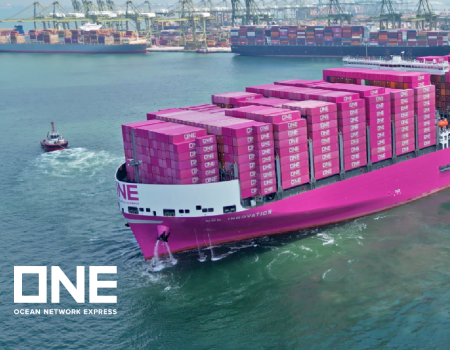Selling online internationally, is, let’s face it, an opportunity just too good to miss. While the US is predicted to hit about 1% growth this year, global e-commerce is growing at 19% a year and is predicted to top $1 trillion worth of transactions this year.
In the UK the picture is looking rosy too, with online sales generated by UK retailers from international markets expected to soar sevenfold to £17 billion by 2020. With even a small percentage of overseas orders, the potential to propel your sales revenue from international markets to another level is well worth the investment in putting the building blocks of a good international e-commerce strategy in place.
Select your markets
Think further afield than your traditional export markets and look at the number of internet users online. Although the web is thought more as a US thing due its early adoption for business, the largest number of internet users is actually in Asia and is growing fast. Furthermore, even though English is still just about the most popular language on the web, there will soon be more Chinese pages on the internet than English pages.
Research your new markets
Different customers have different preferences within the UK and this holds true – and may even be more important – when looking at potential international customers. Think about everything up front so you make the right decisions on everything from evaluating the political and business environment through to checking out the average broadband speeds and mobile phone usage.
Determine your online strategy
Selling online doesn’t just mean having your own full e-commerce website – there are plenty of other ways to sell your products and services in other countries, many of which are low risk and allow you to test the water. You can add your products to an e-marketplace like Alibaba, or simply add a PayPal button to your product pages. For fast visibility in local search engines, add your products to a local agent or distributor’s website or set up a local social media presence.
Choose your e-commerce platform
So if you’re going to take the e-commerce route, then the market is full of companies vying for your attention and promising to build you the best e-commerce system yet. Stand back and produce a specification of your requirements and evaluate what’s out there. Be sure to pick a platform that will be able to support you as you expand internationally, supporting language pages, multiple currencies, different payment systems, delivery options and sales tax rates. Take a look at things like Magento and Shopify – or add an e-commerce module to your existing content management system if your website is built in WordPress, Joomla! or Drupal (you don’t necessarily need to start again). Also, make sure that it will integrate with any stock, finance or customer relationship management systems you already have in place.
Localise and translate your content
To appeal to local customers and to be found in local search engines you will have to have local language content dedicated to each country you are planning to sell into. Furthermore, you will have to customise your website pages to local cultures and local tastes, including the messages, the copywriting and the images. International customers are more likely to buy from you if you do this.
Select local payment methods
We are very advanced and indeed trusting in e-commerce in the UK – one of the world’s leading e-commerce nations. We’ll quite happily part with quite a lot of cash on our credit cards and know that our goods will (normally) arrive. Many cultures are very distrustful of credit cards and usage is much lower. In this case it is good to allow the prospect of customers paying by direct transfer or local payment systems. While PayPal is truly global and accepts most currencies, other specialist payment systems include Alipay in China, Authorize.Net in the USA and Beanstream originating from Canada. Recently booking World Cup tickets in Brazil, we had the option of paying through the Boleto system.
Research some more
Bring everything in the whole marketing, selling and logistics process into question when you are going international. Don’t assume everything will be the same. Don’t assume anything will be the same. Look into distance selling regulations, exchange rates, local legal requirements, customs documents to name but a few areas that will need your attention.
Despite the amount of research and work that you can put into building an international e-commerce strategy, the benefit at the end of the day is tremendous and can be more or less instantaneous. One company, The Travelwrap Company, started receiving web orders from Australia within weeks of setting up dedicated pages and another client Coral Turner Couture secured a private design client in Dubai within four days of starting to optimise her website for international trade.
Top tips for internationalising your marketing and your communications
If you’re thinking of going global then you will need to target your marketing and communications to customers who may well be in different countries, from different cultures and speaking different languages. Your potential global market is now over 7 billion people.
Communicate in English
A recent British Council exhibition ‘The English Effect’ estimates that 1.75 billion people around the world have a working knowledge of English, so that is already a massive potential market for your goods and services. And if you’re thinking of selling online, then English is still just about the most used language on the web across the globe, so clearly this is a good starting point. So before you dash off getting everything translated, take a moment to think through where you could export to English speakers around the world.
Get it right in English
The most important thing is to get your message right in English, whether you are doing business in the UK or across the world. This can then be used as the basis for all of your international marketing and communications whether or not you start to translate into other languages. Sarah Carroll, Director of Grow Global and a trainer on the Make It Global programme, explains: “So many companies we work with haven’t even stated what they do and why they are different. You get technical companies who explain their innovative products in great depth, but haven’t given their ‘elevator pitch’ or a 100 word overview much thought at all. At the other end of the scale you have architects and creative companies who are so focused on showcasing their past projects, they don’t even list their services. This is of course crucial as this is what they are selling and ultimately making money from.”
Adapt for other versions of English
If you’re targeting customers in other English-speaking markets, then you may need to adapt your language for different versions of English, such as American English, Indian English and Singapore English. Many of us are familiar with the use of ‘z’s in American English, but sometimes we need to use different vocabulary too, like the ‘sidewalk’- ‘pavement’, ‘pants’ – ‘trousers’, as some of the more famous examples. Generally it is worth writing in International English to appeal to as many English speakers as possible, but also make sure you’re not using too many technical terms, acronyms, colloquialisms or even humour that may not be understood or misunderstood at best. This also prepares a nice set of marketing copy that is well-written and can be more easily translated into other languages.
Translate into other languages
If you want to reach the remaining five billion customers in the world, it is well worth putting your marketing materials into the local language. Imagine yourself trying to understand something written in Chinese without speaking a word of the language. It is imperative to use a professional translation company to make sure that your text is not just translated into another language, but that your message is tailored to customers in the local market too so that it reads naturally with an appropriate tone.
Sarah warns: “We see companies who have translations carried out by their friend’s mother’s cousin who speaks the language of their target market. While it is hard to completely avoid this scenario if you are setting up your business on a shoestring, friends and family are not trained translators and just because you speak a language does not mean you can write good marketing copy either.”
Localise your images
As well as translating the text, take a look at any images and diagrams you use and make sure they are representative and appropriate for your target markets. Even simple things like car registration plates and the weather are all things to take into account when selecting images to appeal to a global audience. As long as you choose wisely, images are a great help when marketing across languages, because as they say, ‘a picture is worth a thousand words’.
To find out more:
We are running a series of masterclasses in Spring 2014 to show you exactly how to get more international sales online:
Part 1: International Web Design and Optimisation for Global Growth
Part 2: International E-commerce and E-marketplaces for Global Growth
Part 3: International Social Media for Global Growth
Part 4: Google Analytics and Google Adwords for Global Growth







